I have a beta-binomial model like this

where $B$ is the beta function.
I want to estimate the parameters $\theta_1,\theta_2,\ldots,\theta_5$.
I used a Maximum likelihood method:
BBlikelihood = function(theta){
k = theta[1]/(1+exp(theta[2]*x+theta[3]))+theta[4]
mu = exp(k)/(1+exp(k))
if(theta[5]<0) theta[5]=0
return(-sum(lchoose(n,y)+
lbeta(y+mu*theta[5],n-y+(1-mu)*theta[5]) -
lbeta(mu*theta[5],(1-mu)*theta[5])))
}
theta.init = c(8,100,-3,-6,1)
BBtheta = optim(theta.init,BBlikelihood,control=list(maxit=1000))
BBtheta$par
Then, I used MCMC as below:
HastingsBBlikelihood = function(theta,theta.prime){
k = theta[1]/(1+exp(theta[2]*x+theta[3]))+theta[4]
mu = exp(k)/(1+exp(k))
k.prime = theta.prime[1]/(1+exp(theta.prime[2]*x+theta.prime[3]))+theta.prime[4]
mu.prime = exp(k.prime)/(1+exp(k.prime))
if(theta.prime[5]<0)
return(-Inf)
sum( ( lbeta(y+mu.prime*theta.prime[5],n-y+(1-mu.prime)*theta.prime[5])
- lbeta(mu.prime*theta.prime[5],(1-mu.prime)*theta.prime[5]))
- ( lbeta(y+mu*theta[5],n-y+(1-mu)*theta[5])
lbeta(mu*theta[5],(1-mu)*theta[5])))
}
SigmaBB = list(0.1*diag(5))
Sigma.i = 1
thetaBB.mcmc = matrix(c(8,100,-3,-6,1),1,5)
for(i in 2:25000){
if((i %% 1000)==0){
Sigma.i <- Sigma.i + 1;
SigmaBB[[Sigma.i]] <- 2.38^2*var(thetaBB.mcmc)/5
}
thetaBB.mcmc = rbind(thetaBB.mcmc,
mvrnorm(n=1,
thetaBB.mcmc[i-1,],
Sigma=SigmaBB[[Sigma.i]]))
if(log(runif(1))>HastingsBBlikelihood(thetaBB.mcmc[i-1,],thetaBB.mcmc[i,]))
thetaBB.mcmc[i,] <- thetaBB.mcmc[i-1,]
}
the MCMC estimations agree with maximum likelihood estimations.
Finally, I used jags to estimate the parameters as the following:
cat("model {
# Parameters
theta[1] ~ dunif(-1.e10, 1.e10)
theta[2] ~ dunif(-1.e10, 1.e10)
theta[3] ~ dunif(-1.e10, 1.e10)
theta[4] ~ dunif(-1.e10, 1.e10)
theta[5] ~ dunif(0, 1.e10)
# Observations
for (i in 1:TT){
k[i] <- theta[1]/(1+exp(theta[2]*x[i]+theta[3]))+theta[4]
mu[i] <- exp(k[i])/(1+exp(k[i]))
p[i] ~ dbeta(mu[i]*theta[5],(1-mu[i])*theta[5])
y[i] ~ dbin(p[i],n[i])
}
}",
file="BetaBinom.bug")
library("rjags")
TT<-length(y)
jags <- jags.model('BetaBinom.bug', data = list('x'=x, 'y'=y, 'n'=n , TT=TT ))
res <- coda.samples(jags,c('theta'),1000)
res.median = apply(res[[1]],2,median)
res.median
res.mean = apply(res[[1]],2,mean)
res.mean
res.sd = apply(res[[1]],2,sd)
res.sd
The estimations in this way are very strange and not as the previous values. I wonder what is wrong in the jags function!? Thanks for any comment or suggestion in advance.
https://ehc.ac/p/mcmc-jags/discussion/610037/thread/dc35eac1/#4823